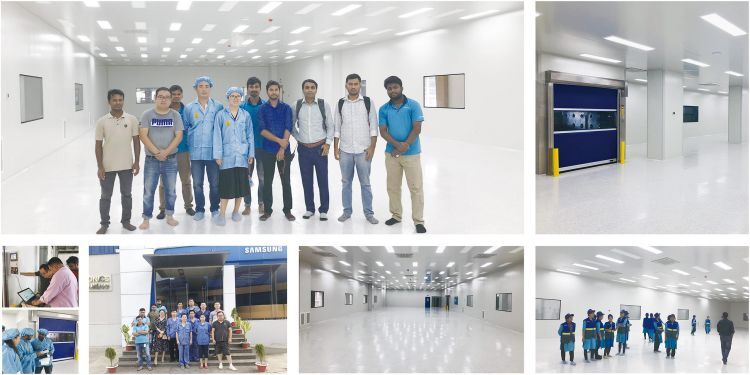Clean Room Equipment Components and Benefits
- 2024-01-05
- View 15
The goal of clean rooms is to provide a space in which users can build critical components and test products for performance, durability, etc. without having to worry about contamination. Clean rooms also allow users to simulate the environment or environments in which an item will be used. Aerospace engineers, for example, can have a clean room built that simulates the air pressure, temperatures, gravity levels, etc. that will be present in the environment an aircraft or spacecraft will operate. Inside this control environment, testing is much more efficient and results are much more accurate.
Clean rooms are essential to applications that rely on pristine air quality and particle elimination. These applications include: optics, aerospace, medical device, biotechnology, software engineering, pharmacological studies, infectious disease testing, and various medical research operations and products testing.

Clean Room Equipment Components
Clean rooms generally come with an air quality control system of some type, like air filters, fans, and pumps. The best kept clean rooms have air flow that is controlled by directional air filters that encourage a laminar air flow; using laminar air flow ensures that new, filtered air continuously cycles into the clean room and removes any lingering contamination. Common and highly effective filters used in cleanrooms include High Efficiency Particulate Air (HEPA) filters and Ultra Low Particulate Air (ULPA) filters. HEPA filters can trap particles sized .3 microns and larger. ULPA filters provide an even more rigorous performance.
Inside clean rooms, you may find cleanroom furniture, such as a cleanroom table, cleanroom wall, laminar flow bench or laminar flow hood.
Note that, to keep from tracking in particles, operators and other personnel must don proper clean room apparel; humans shed 100,000 particles of dead skin cells per minute just while standing! Apparel to cover up human skin and hair, which is around 100 micrometers wide, includes shoe covers, beard covers, bouffant caps and face masks, as well as accessories like approved cleaning wipes. In addition, these efforts may be amplified by the use of air showers, which are small rooms in which personnel step to rinse off prior to entering a clean room.
Clean Room Benefits
Cleanrooms are fantastic, and there are a number of reasons to choose them for your application. First, with impurities gone, your system or the product you’re working is far less likely to malfunction or break down. Second, you can work on, study or use far more sensitive materials or technology than you could without a cleanroom. This is because, without a cleanroom, those items would be compromised and your work would be rendered inaccurate, unsafe or inefficient. By using a cleanroom, you are also able to cultivate and surround your product with a miniature or even micro environment. For instance, by establishing constant positive pressure within your cleanroom, you can create a clean room environment that contains leaks. Or, by creating a cleanroom environment with constantly low humidity, you can control electrostatic discharge. Finally, thanks to each of the advantages you’re gaining, with a clean room, you’ll also find yourself saving time, money and energy, while gaining a reputation for better work or products.
Kwang Cleanroom is proud to offer examples of a variety of our cleanroom projects below. Aseptic Purification Cleanroom Of Food Factory, Electronic Dust Free Cleanroom, GMP Cleanroom For Medical Devices, Dust Free Cleanroom Of Printing Industry, Blow Molding Film Purification Cleanroom, Aseptic inoculation Cleanroom For Edible Bacteria, Purification Projects In Other Industries.
